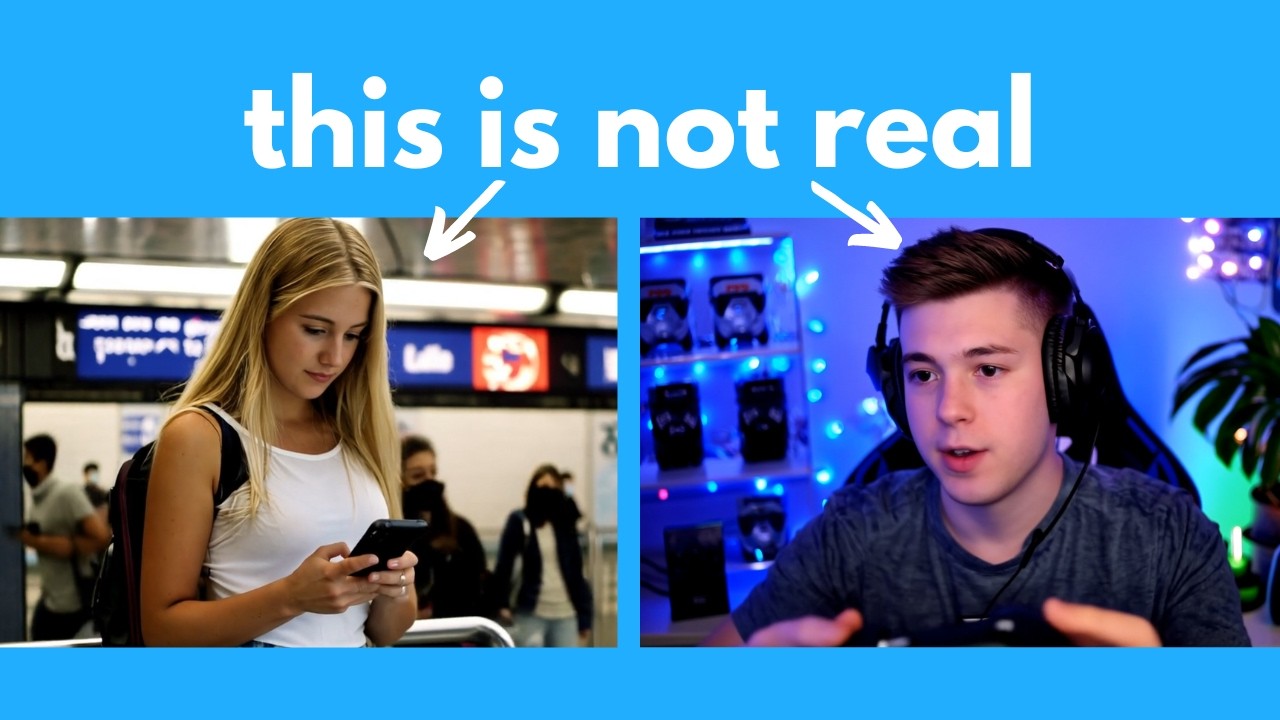The video showcases Hotshot, an AI video generator that creates remarkably realistic videos of humans, demonstrating its strengths with various prompts while highlighting its limitations in more complex scenarios. While it excels at generating lifelike upper-body shots, it struggles with dynamic prompts and abstract concepts, prompting the presenter to encourage viewers to experiment with the tool and explore other video generators for different needs.
The video introduces a new AI video generator called Hotshot, which has garnered attention for its impressive ability to create realistic videos of humans. The presenter showcases various prompts, starting with a woman on a train looking at snowy mountains, and quickly moves on to other scenarios, such as a gamer influencer live streaming. The quality of the generated videos is highlighted as being remarkably lifelike, with natural movements and expressions that make it difficult to discern that they are AI-generated.
The presenter explains how to use Hotshot, noting that users can sign up with a Google account and generate three free videos per day. The videos are currently limited to five seconds in length and a resolution of 1344 by 768. The tool excels at generating portrait videos of humans, and the presenter tests its capabilities with various prompts, demonstrating its strengths in creating realistic upper-body shots of people engaged in different activities.
However, the video also explores the limitations of Hotshot by testing more complex prompts, such as aerial drone shots and fantastical scenarios like an astronaut riding a unicorn. The results for these prompts are less impressive, with the generated videos failing to meet expectations in terms of realism and adherence to the prompts. Comparisons are made with other video generators like Minimax and Cling, which perform better in specific areas, such as aerial views and animated styles.
The presenter continues to test Hotshot with various prompts, including generating text and time-lapse videos, revealing that the tool struggles with these tasks. For instance, it fails to accurately depict text made of smoke and does not produce convincing time-lapse footage of the night sky. The video emphasizes that while Hotshot is excellent for generating human portraits, it falls short in more dynamic or abstract scenarios.
In conclusion, the video summarizes that Hotshot is a powerful tool for creating realistic videos of people but has limitations when it comes to more complex prompts or specific styles like animation and product commercials. The presenter encourages viewers to experiment with Hotshot while also acknowledging that different video generators excel in different areas. The video wraps up with a call to action for viewers to share their experiences and stay updated on AI developments through the presenter’s newsletter.
